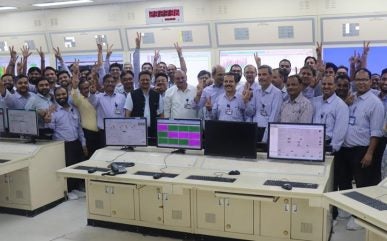
Unit 7 of India’s Rajasthan Atomic Power Project (RAPP at Rawatbhata, has achieved first criticality (start of controlled fission chain reaction) after clearance of First Approach to Criticality by the Atomic Energy Regulatory Board (AERB).
RAPP-7 is the third in the series of 16 700 MWe indigenous pressurised heavy water reactors (PHWRs) under construction. The successful criticality at RAPP-7 comes after the operation of the first two 700 MWe PHWRs, at Kakrapar NPP units 3&4 in Gujarat. The Nuclear Power Corporation of India Ltd (NPCIL) said this demonstrates the maturity achieved by NPCIL in the design, construction and operation of the indigenous 700 MWe PHWRs.
Various tests will now be conducted before RAPP-7 is connected to the grid. The power level will then be increased in stages to full power, in line AERB approval. At the RAPP site there are already six units with a total capacity of 1180 MWe in operation. RAPP-7 is expected to start generation this year, followed by RAPP-8 in 2025.
NPCIL presently operates 24 reactors with a total capacity of 8180 MWe with eight units (including RAPP-7) with a capacity of 6800 MWe under construction. In addition, 10 more reactors with a total capacity of 7000 MWe are in the pre-project phase. These are expected to be completed progressively by 2031.
Researched and written by Judith Perera






